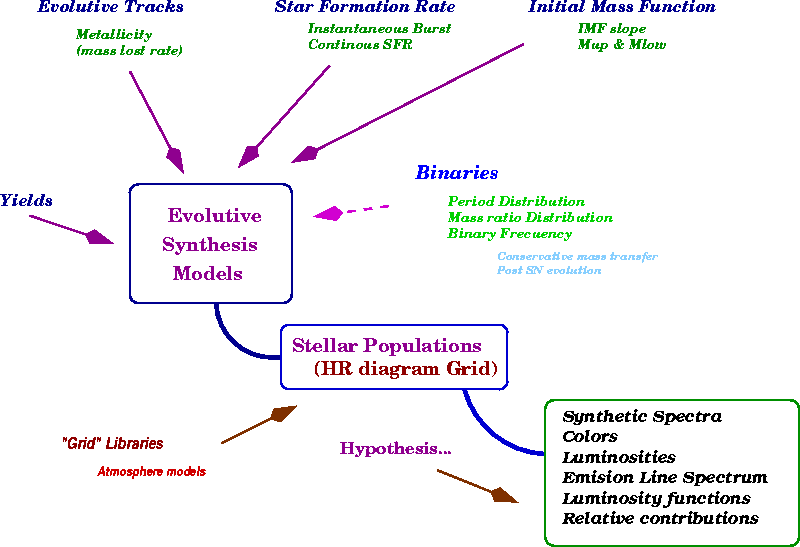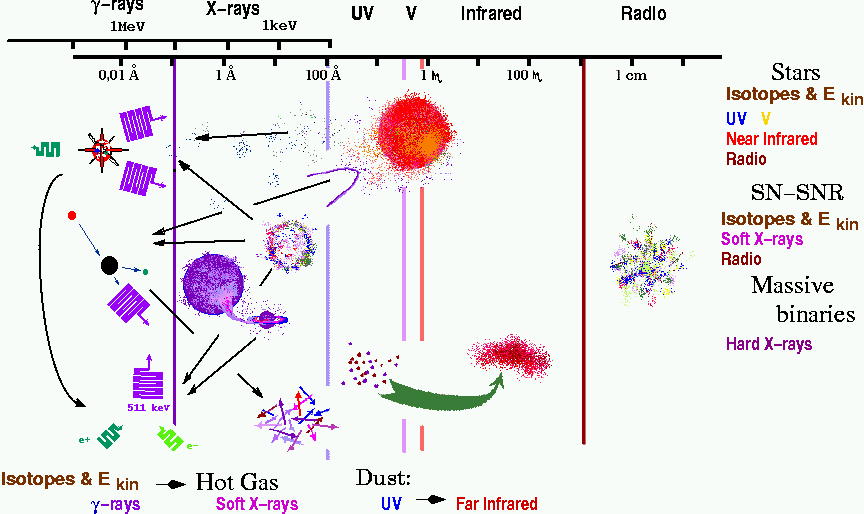Evolutionary synthesis models basically works in the following way:
- They take some evolutionary tracks and compute
from them Isochrones: It can be done by the model or
it can use directly tabulated isochrones from published authors, as example
- Padova isochrones, tracks and single stellar population (ssp) results.
- Geneva isochrones tracks and ssp results
The isochrone computation is the main part of the heart of a
synthesis model. It gives us the evolutionary status of the different stars
in the synthesis code for a given age.
- The second part of the heart is the stellar
birth-rate (Tinsley
1968, ApJ 151, 547, see also Tinsley 1980,
Fundamentals of Cosmic Physics, 5, 287 or Scalo 1986, Fundamentals of
Cosmic Physics, 11,1). It means, the probability of form a given
amount of stars in a given mass interval at given age. The use of a
stellar birth-rate is mathematically complicated, hence, it is prefered
separate it in two different functions:
- The Initial Mass Function, IMF
that gives us the probability of obtain certain number of stars in a
given mass range and that it is ussually normalized to the total amount
of gas transformed into stars.
- The Star Formation History, SFH
that gives us the amount of gas transformed into stars at a given
age. The simplifications of an Instantanous Burst model (or coeval star
formation or simple stellar populations, ssp) corresponds to a
Dirac's delta SFH. Simillary, a no time dependent SFH coresponds to a
Constant Star Formation Rate, or, simply, Star Formation Rate.
- The third part of the heart are the stellar
libraries, that includes atmosphere models, yields, etc that
relates the quantities obtained in the isochorne (Teff,
Bolometric Luminosity, instantaneous mass, surface abundances, mass lost
rates...) with "observable" quantities (monochromatic luminosities, band
luminosities, ionizing spectrum, kinetic power, etc...). In this way the multiwavelength energy distribution can be computed when it is taken into account all the relevant processes in each energy range. The situation is ilustrated in the Figure:
|




